COFFEE VARIETIES
There are more than 125 species of coffee known in the world today, though only two of them are commercially viable: Coffea arabica and Coffea canephora. In specialty coffee, we primarily focus on Arabica coffee, the species that is the grown at higher elevation, contains about half the caffeine, and is generally more nuanced, floral, and sweet than Canephora (Robusta). Within the species Arabica there are countless varieties and cultivars, creating a vast coffee family tree that represents a variety of coffee plant appearances, crop performance, and cup characteristics.
Of the many variables that impact the ultimate taste and quality of a coffee, the plant’s botanical lineage and genetic heritage play a significant—but not solo—part. We know that in addition to the pedigree of the coffee itself, things like terroir, ripe picking, post-harvest processing, and even roasting and brewing will have considerable influence over how a coffee tastes. However, knowing a bit about varieties and cultivars can help us predict how a particular coffee might cup out.
There are many different scientific studies happening around the coffee world in order to catalog, qualify, develop, test, and unlock coffee’s myriad varieties, and we at Cafe Imports are interested in pursuing our own knowledge of how isolating individual types of coffee might impact flavor, as well as impact farmers (and consumers). We are happy to share that knowledge with you here, and to update it as we learn and grow in our understanding.

ABYSSINIA
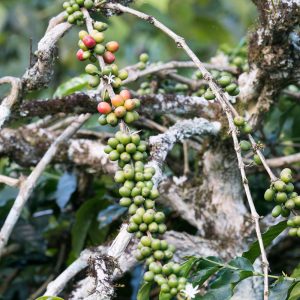
Derivation: Ethiopian Landrace
Location of Origin:Ethiopia
Origin Story: Wild or native Arabica type discovered in SW Ethiopia, brought to Indonesia (Java) in 1928
BATIAN
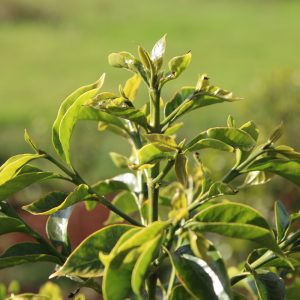
Batian, Chania Estate, Kenya
Derivation: Ruiru 11 x SL-28, SL-34, Rume Sudan, N39, K7, SL4, Timor Hybrid
Location of Origin: Kenya
Origin Story: Kenyan Coffee Research Institute bred and released in 2010
BLUE MOUNTAIN
Derivation: Typica related
Location of Origin: Jamaica
Origin Story: Clippings of Typica plant brought to Jamaica (1728–1730)
BOURBON
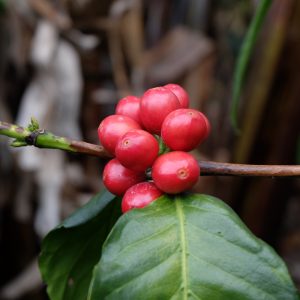
Pink Bourbon
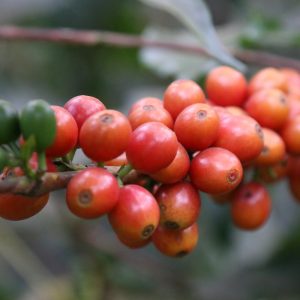
Orange Bourbon, Finca Las Nubes
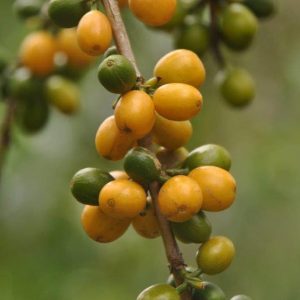
Yellow Bourbon
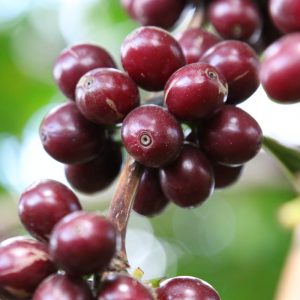
Red Bourbon, Finca Las Nubes, El Salvador
Derivation: Typica related
Location of Origin:Île Bourbon
Origin Story: Naturally occurring Typica mutation; selected from Ethiopian coffee cultivated in Yemen transplanted to Bourbon Island (now Réunion) in 18c
CASTILLO
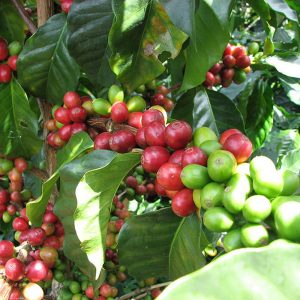
Castillo, Colombia
Derivation: F10 Variedad Colombia x Caturra
Location of Origin: Colombia, general
Origin Story: Developed by Cenicafe to replace the no-longer-leaf-rust-resistant Variedad Colombia; released 2005
CATIMOR
Derivation: Caturra x Timor Hybrid
Location of Origin: Portugal; Brazil
Origin Story: Bred by CIFC, Portugal (1959); tested in Angola and Brazil; released in Brazil (1970). “Catimor” also refers to a family of similar hybrids
CATUAI
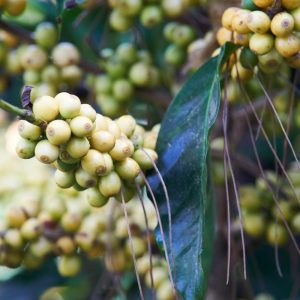
Catuai, Nicaragua
Derivation: Mundo Novo x Caturra
Location of Origin: Brazil
Origin Story: Cross of Caturra and Mundo Novo made by Instituto Agronômico de Campinas, Brazil; released in 1972
CATURRA

Caturra
Derivation: Bourbon related
Location of Origin: Brazil
Origin Story: Naturally occurring dwarf Bourbon mutation discovered in Minas Gerais, Brazil (1915–1918) and later selected for cultivation (1937)
COLOMBIA
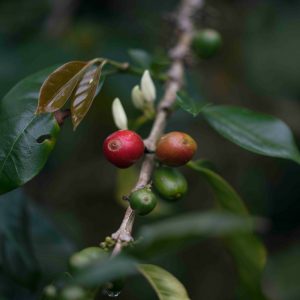
Colombia
Derivation: Catimor type (Caturra x Timor Hybrid)
Location of Origin: Colombia
Origin Story: Developed as a disease-resistant, productive hybrid by Cenicafe (1968–1982); released 1985. One of the earliest Catimors
FRENCH MISSION
Derivation: Bourbon related
Location of Origin: Kenya
Origin Story: Coffees transplanted to Kenya from Île Bourbon in late 19c by French missionaries the Holy Ghost Fathers (1895)
GESHA (1931)
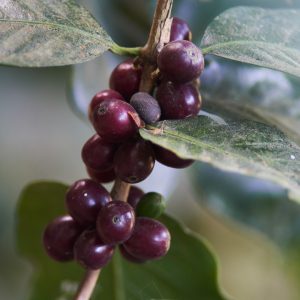 Derivation: Ethiopian Landrace
Derivation: Ethiopian Landrace
Location of Origin: Ethiopia; Tanzania
Origin Story: Landrace type collected by British (1936); sent to CATIE via Tanzania (1953); subsequently planted in Panama
GESHA (1956)
Derivation: Ethiopian Landrace
Location of Origin: Ethiopia; Malawi
Origin Story: Landrace variety brought to Malawi from CATIE (1956)
IHCAFE 90
Derivation: Catimor type (Caturra x Timor Hybrid)
Location of Origin: Honduras
Origin Story: Hybrid cross of Caturra with Timor Hybrid developed by the Instituto Hondureño del Café (IHCAFE)
KUDUME/KURUME
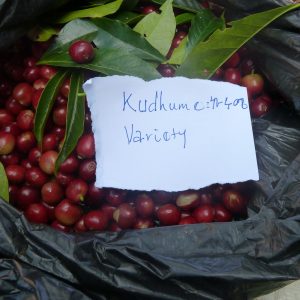
Kudhumi Kurume, Ethiopia
Derivation: Ethiopian Landrace
Location of Origin: Ethiopia
Origin Story: Smaller-size landrace variety found in Ethiopia
MARACATURRA
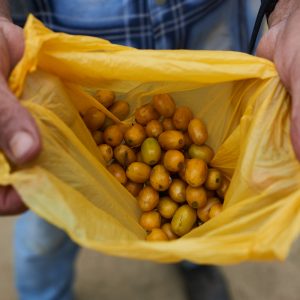
Maracaturra, Nicaragua
Derivation: Maragogype x Caturra
Location of Origin: Brazil
Origin Story: Purported to be a naturally occurring cross of Maragogype and Caturra discovered in Brazil (19c)
MARAGOGYPE
Derivation: Typica related
Location of Origin: Brazil
Origin Story: Naturally occuring Typica mutation discovered in Brazil (1870); has large leaves, fruit, seeds, and internodes
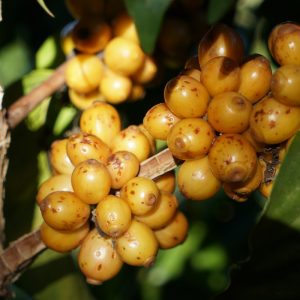
Maragogype, Santuario Sul, BRazil
MIBIRIZI
Derivation: Typica and/or Bourbon related
Location of Origin: Guatemala; Rwanda
Origin Story: Introduced from Guatemala to Rwanda (1910s); distributed to Mibirizi in western Rwanda (1920s). Possible Typica-Bourbon cross
MOKKA
Derivation: Bourbon related
Location of Origin: Yemen; Brazil; Hawaii
Origin Story: A naturally occurring dwarf mutation of Bourbon related to Yemen accession; introduced to Hawaii from Brazil (1950s–1960s)
MUNDO NOVO
Derivation: Typica x Bourbon
Location of Origin: Brazil
Origin Story: Naturally occurring cross of Typica and Bourbon discovered in Brazil (1943)
PACAMARA
Derivation: Pacas x Maragogype
Location of Origin: El Salvador
Origin Story: Cross between Pacas (dwarf Bourbon type) and Maragogype (Typica family); Salvadoran Institute of Coffee Research (ISIC)

PACAS
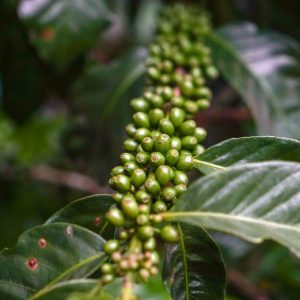
Pacas, El Salvador
Derivation: Bourbon related
Location of Origin: El Salvador
Origin Story: Naturally occurring dwarf Bourbon mutation discovered in El Salvador (1949)
PACHE
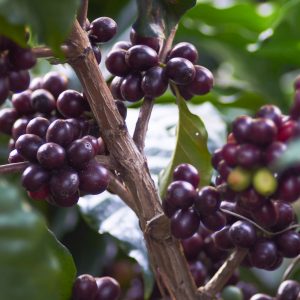
Pache, Huehuetenango, Guatemala
Derivation: Typica related
Location of Origin: Guatemala
Origin Story: Natural occurring dwarf mutation of Bourbon discovered on a single farm in Guatemala (1949)
ROBUSTA
Location of Origin: Western Africa, various
Derivation: Variety of C. Canephora
Origin Story: Common variety of C. Canephora
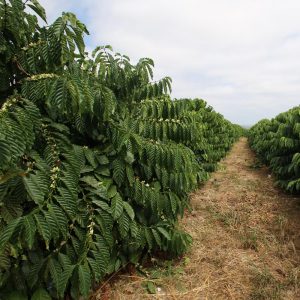
Robusta, Ecuador
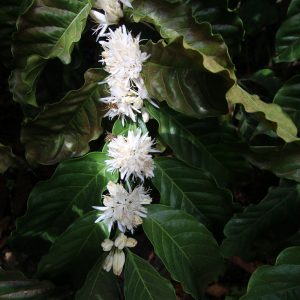
Robusta, Ecuado
RUIRU 11
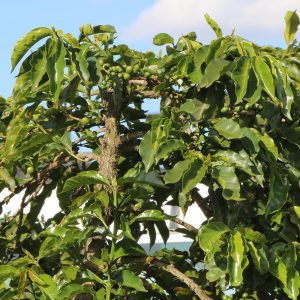
Ruiru 11, Chania Estate, Kenya
Derivation: Complex hybrid cross
Location of Origin: Kenya
Origin Story: Hybrid cross of types including N39, SL-28, SL-34, Bourbon, Rume Sudan, Timor Hybrid, and more (1985)
SL-28
Derivation: Bourbon related
Location of Origin: Kenya
Origin Story: Selected by Scott Laboratories (1935–1939) from a line of Tanganyika Drought Resistant I trees; possible heritage to Yemen
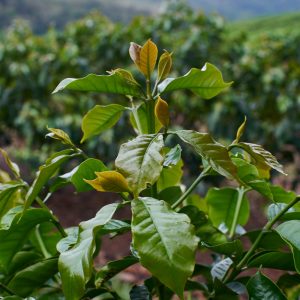
SL-28, Santuario Sul, Brazil
SL-34
Derivation: Typica Related
Location of Origin: Kenya
Origin Story: Selected by Scott Laboratories 91935-1939) from a tree on a single farm in Kabete
TIMOR HYBRID
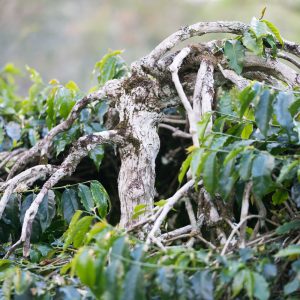
Timor Hybrid, Sumatra
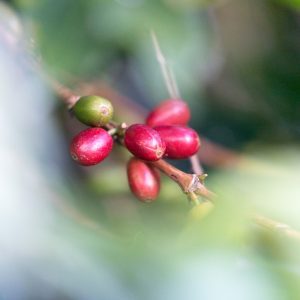
Timor Hybrid, Sumatra
Derivation: Interspecific hybrid of C. Arabica x C. Canephora
Location of Origin: Timor
Origin Story: Naturally occurring interspecific hybrid of C. Arabica and C. Canephora discovered on Timor in 1920
TYPICA
Derivation: Derivative of Yemeni cultivar transplanted from Ethiopia
Location of Origin: Java via Yemen
Origin Story: C. Arabica root variety; mutation of one or more selections from Ethiopia in Yemen; brought to Java by the Dutch (17c)
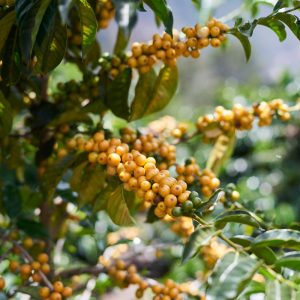

Typica, Hacienda La Papaya, Ecuador
VILLA SARCHI
Derivation: Bourbon related
Location of Origin: Costa Rica
Origin Story: Naturally occurring dwarf Bourbon mutation discovered in Sarchi, Costa Rica (1950-60s)
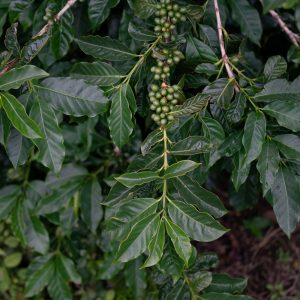
Villa Sarchi, Cerro San Luis, Costa Rica